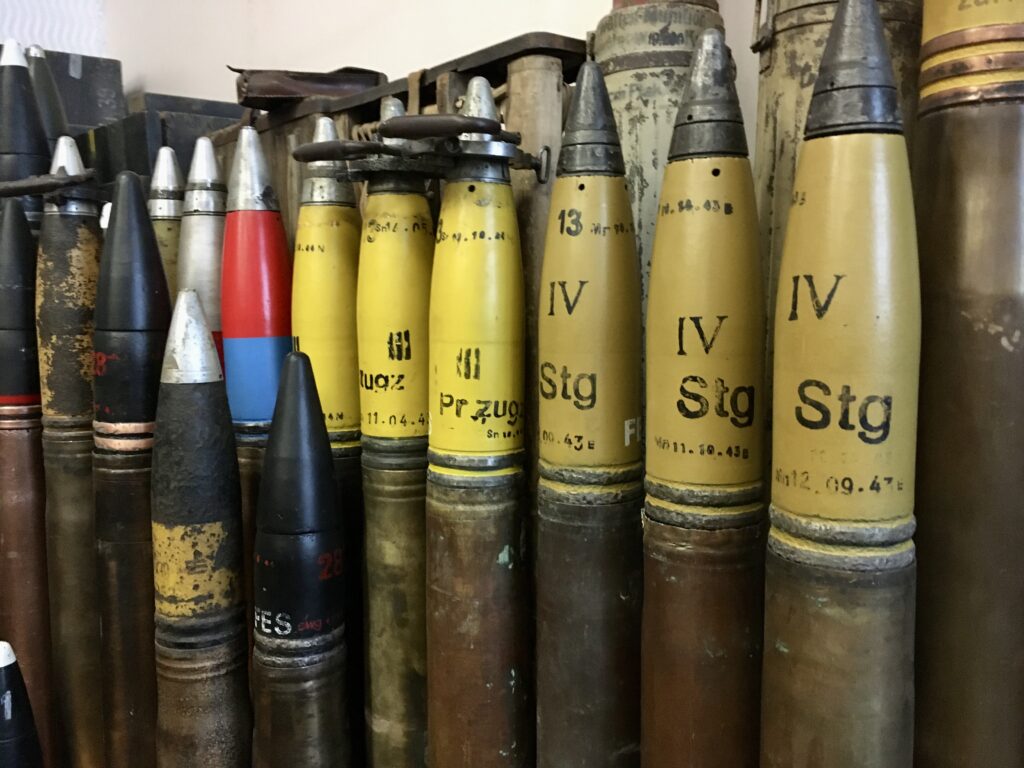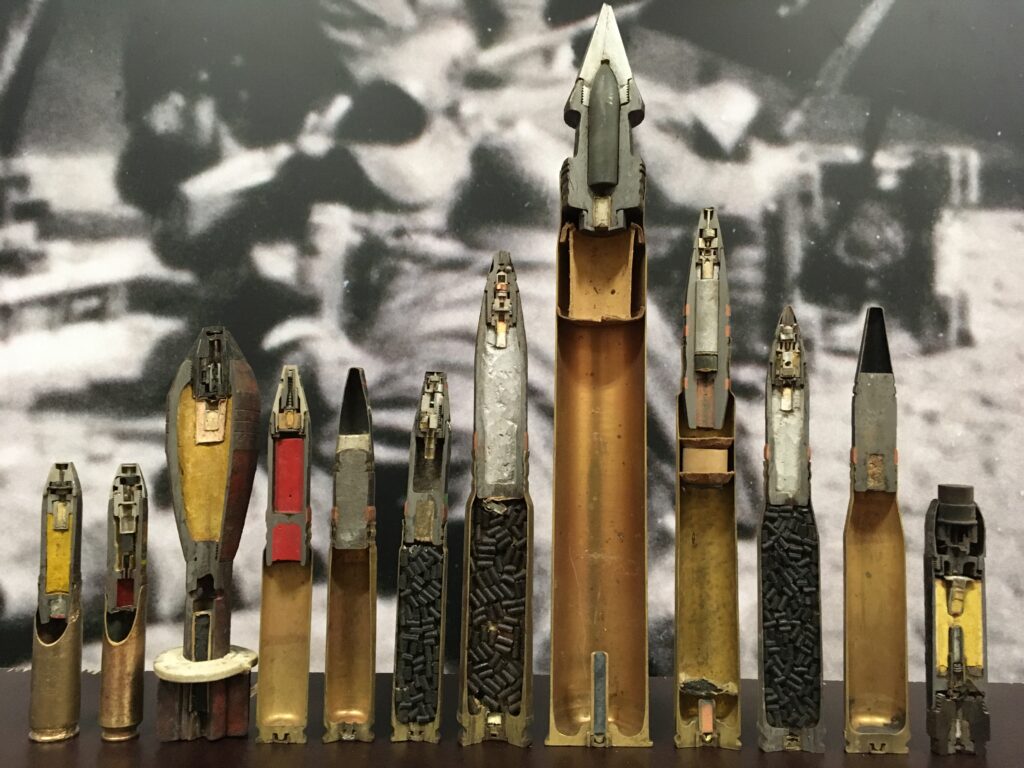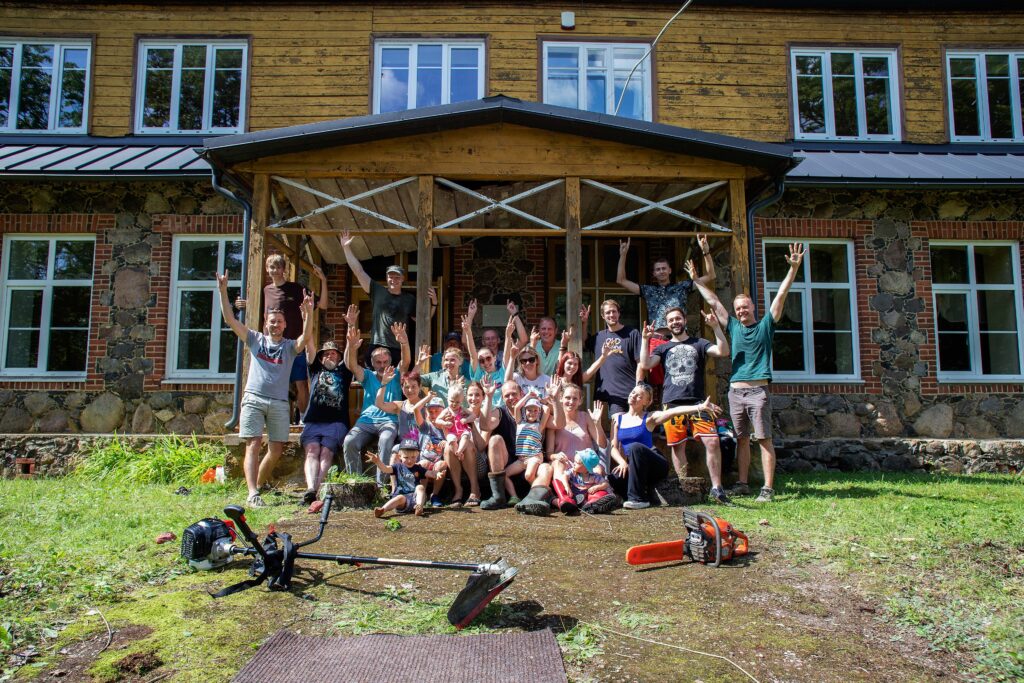Pärnumaa Military History Centre
One of northern Europe’s largest and most impressive public displays of munitions and educational resources – gathered from private collections – is ready to welcome you!
We invite everyone to explore our exhibition. Schools, groups, and partners are welcome to join our interactive learning sessions and participate in national defence education—a fun and engaging experience for all.
Our exhibition is in preparation, and we look forward to welcoming you soon!

Understanding history helps us appreciate the value of peace
About the Military History Centre
One of the highlights of our centre is a permanent exhibition – one of the largest public-private collections in Northern Europe. It features many items, from historic mines and artillery shells to large aircraft bombs.
Another key focus is education and national defence awareness.
The Pärnumaa Military History Centre is a brilliant place for meaningful visits – perfect for national defence classes, hands-on workshops for schools, group training sessions, and collaborative learning for partners.
In our workshops, we explore what matters to us, why it’s dear to us, and why it’s worth protecting. We introduce various topics from military history and explain the dangers that can come with ammunition and related finds. And, of course, you’re always welcome to enjoy a fascinating visit.
We look forward to welcoming you – a memorable, eye-opening and inspiring experience awaits!

Shell and Bomb Collection
Our permanent exhibition – our pride and joy – is likely one of the largest private collections of 20th-century wartime ammunition and explosives in Northern Europe and Scandinavia.
Take a closer look
Workshops in the Classroom
In our classrooms, you can explore various types of ammunition and learn how they’ve developed over time. We also explain why shells found in the forest can still be dangerous decades later – and much more.
Take a closer look
Activities for Groups
There’s plenty to do at our centre for work teams, groups of friends, and families alike. Come spend some quality time with us and discover something new!
Take a closer look
TICKETS
Your ticket gives you access to all exhibitions.
Adults: 10€
Schoolchildren: 7€
Preschoolers: tasuta
Seniors: 7€
Family ticket: 25€
Two adults and two children
Guide (by booking, EST / ENG): 25€ / hour
News & announcements
Kas teadsid, et:
In 2000, a rare World War II-era Soviet T-34/76 tank was discovered and recovered from Lake Mätasjärv in Ida-Viru County, Estonia. Remarkably, this tank bears markings from both Soviet Red Army and Estonian units that fought on the German side—making it a powerful symbol of the complex wartime history in the region. You can see ammunition from this very tank on display in our permanent exhibition.
Kas teadsid, et:
During World War II, the Germans used rocket-propelled artillery nicknamed “Heulende Kuh” (“Screaming Cow”) due to the distinctive howling sound of the rocket motors. In contrast, the Soviet Union deployed similar weapons known as “Katyusha” and “Andryusha.” You’ll find an extensive selection of rocket types from both sides in our permanent exhibition.
Kas teadsid, et:
One of the most feared anti-personnel aerial bombs of the Second World War went by the names “Butterfly” and “Devil’s Egg” (SD 2). Beautiful in shape but deadly in effect, these small yet sinister devices were greatly feared by infantry – and you can find examples of them in our permanent exhibition.
Kas teadsid, et:
The quickest way to destroy a gun barrel can happen at a speed of 7,000 metres per second – thousands of times faster than the blink of an eye. The Germans achieved this using a special circular demolition charge that was placed around the barrel. This method allowed a weapon to be destroyed quickly if there was a risk of it falling into enemy hands. Rare examples of these German demolition charges can be seen in our permanent exhibition.
Kas teadsid, et:
During World War II, the largest calibre fixed round (where the shell, propellant charge, and primer are permanently joined together in a single metal casing) mass-produced by the Germans was used in the 12.8 cm anti-aircraft gun. This complete round measured about one and a half metres in length and weighed nearly 50 kilograms. You can see a round of this impressive size on display in our permanent exhibition.
Kas teadsid, et:
During World War II, the Germans positioned 28 cm coastal artillery guns at the tip of the Viimsi Peninsula on Estonia’s northern coast. These massive guns fired 330 kg shells with a range of approximately 34 kilometres. One such shell—so large it took four men to carry and could reach halfway to Finland—can be seen in our permanent exhibition.
Kas teadsid, et:
An anti-handling device used for disarming German anti-tank mines was manufactured by top-tier German toy companies Märklin and Schuco – both renowned for their precision craftsmanship in the toy industry.
You’ll find this kind of high-level military micro-mechanics from famous toy makers in our permanent exhibition as well.

